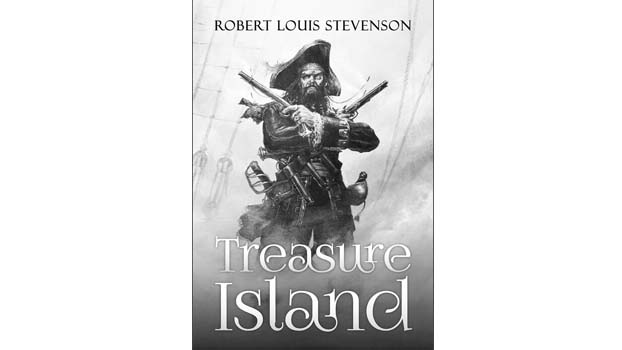Book Review
Treasure Island by Robert Louis Stevenson

Robert Louis Stevenson’s Treasure Island (published in 1883) is traditionally regarded as a story that instructs young boys on the virtues that are to be gained before crossing the threshold of manhood. Or as an adventure tale that functions as a wake-up call to young minds. But this novel is much more than just a coming-of-age story. Jim Hawkins is a young boy who helps his parents run their seaside inn. When their lodger Billy Bones dies, Jim gains possession of a map that indicates the location of a hoard of gold hidden by pirates in a Caribbean island. Jim seeks the advice of Dr Livesey and Squire Trelawney, and together they decide to set out on a treasure hunt. The adventure starts with their journey in the schooner Hispaniola- the majority of the crew is a group of bloodthirsty pirates, led by the wily Long John Silver, preparing a mutiny.
British mercantile capitalism and maritime trade thrived with the help of the powerful navy. In the nineteenth century cartography had reached its peak; and pirate-hunting was one of the top priorities of the navy. It is only natural that young people of the time would be fascinated by the glamour of the navy and the adventure-filled sea life. Even today, children love to dress up as pirates. Adults also enjoy pirate fantasies- as proved by the immense success of films like Pirates of the Caribbean.
The language of this late nineteenth century novel is very simple. Also, it is exceedingly hard to leave this book midway. Most of the story is narrated by Jim Hawkins, and a few chapters are narrated by Dr Livesey.
Treasure Island has been one of my favourite reads for over ten years. Adults are sometimes shocked by the violence of the content. But I feel that this book exposes violence for what it is without allowing any unhealthy fascination with blood and gore. Long John Silver is of course one of the greatest villains in English literature.
His virtues, wit and wisdom are very unusual for a nineteenth century villain. Long John, with his imposing physique, his crutches and his parrot has become the image of the quintessential pirate. But at the same time he is very humane, extremely familiar and frighteningly real. Jim Hawkins and Dr Livesey are also immortal characters. Dr Livesey is a figure of staunch morality in a world of greed, cruelty and profligacy. Jim, with his wholesome curiosity, his hunger for adventure and excitement, and his instinctive knowledge of right and wrong, is the representative of the young and the young at heart.




